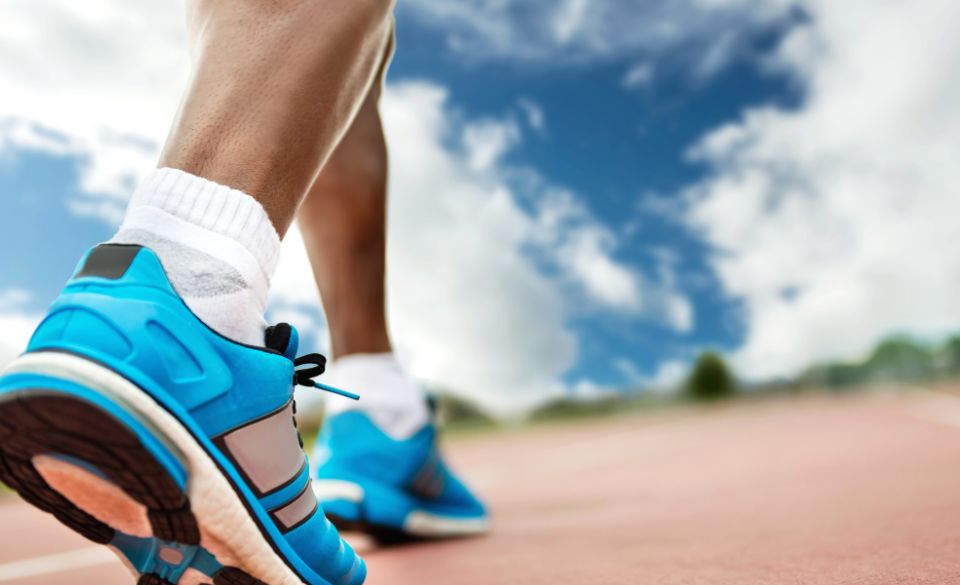
How To Choose The Best Running Socks
Page Contents
When it comes to running gear, we often focus on finding the perfect pair of shoes or the right moisture-wicking clothing. However, one crucial aspect that should not be overlooked is selecting the best running socks. While they may seem like a small detail, the right pair of socks can make a significant difference in your running comfort and performance. In this article, we’ll explore the importance of socks for runners, discuss the best materials to look for, and provide tips on choosing the ideal pair of running socks for your needs.
Why Socks Are Important For Runners
You might be wondering, why are socks so important for runners? Well, running socks serve multiple purposes that directly impact your comfort and overall running experience. Firstly, they help to protect your feet from blisters and abrasions caused by friction between your skin and the shoe. Good running socks have moisture-wicking properties, which means they draw moisture away from your skin, keeping your feet dry and reducing the likelihood of blisters forming.
Secondly, running socks provide cushioning and support in key areas of your feet. They can help absorb shock and impact during each stride, reducing the strain on your feet and lower limbs. Additionally, socks with arch support and compression can improve blood circulation and provide extra stability, enhancing your running performance.
Lastly, socks play a role in temperature regulation. They provide insulation during colder runs and allow for breathability to prevent overheating and excessive sweating in warmer conditions. Choosing the right pair of socks that cater to your specific running conditions and needs can greatly enhance your comfort and enjoyment on the road or trail.
Best Material For Runners Socks
When it comes to selecting the best material for running socks, it’s important to consider breathability, moisture-wicking capabilities, and durability. Here are some of the top materials commonly used in running socks:
Synthetic fibers: Materials such as polyester, nylon, and spandex are popular choices for running socks. They are lightweight, breathable, and excellent at wicking away moisture. Synthetic socks also tend to be durable and quick-drying, making them ideal for long-distance runs or hot weather conditions.
Merino wool: Despite the misconception that wool socks are only suitable for cold weather, merino wool socks are a fantastic option for runners year-round. Merino wool is a natural fiber that offers excellent moisture-wicking properties while providing insulation in colder temperatures. It also has antimicrobial properties, reducing the chance of odor buildup.
Bamboo: Bamboo fibers are gaining popularity in running socks due to their softness and moisture-wicking abilities. They are naturally breathable, hypoallergenic, and offer excellent temperature regulation. Bamboo socks are known for their silky feel and can provide a comfortable and snug fit.
Blends: Some running socks combine different materials to take advantage of their individual benefits. For example, a blend of synthetic and merino wool fibers can provide a balance of moisture-wicking, breathability, and insulation properties.
How To Choose Running Socks
Now that you know the importance of socks and the various materials available, let’s delve into how to choose the right running socks for your specific needs:
Consider the season and climate: Determine the typical running conditions you’ll be facing. In warmer weather, opt for lightweight, breathable socks. For colder temperatures, look for socks with insulation properties.
Moisture-wicking and breathability: Look for socks that have moisture-wicking capabilities to keep your feet dry and comfortable during your runs. Additionally, choose socks with good ventilation to allow airflow and prevent excessive sweating.
Arch support and cushioning: Depending on your foot type and preferences, consider socks with built-in arch support or cushioning in the heel and forefoot areas. This extra support and cushioning can help reduce fatigue and provide added comfort during long runs or intense workouts.
Proper fit: Just like with shoes, finding the right fit is crucial for running socks. Look for socks that offer a snug but not too tight fit. Avoid socks that bunch up or slide down while running, as they can cause discomfort and potential blisters. Consider socks with features like seamless toes to minimize friction and irritation.
Durability: Running socks go through a lot of wear and tear, so it’s important to choose socks that are durable and can withstand frequent use and washing. Look for reinforced areas such as the toe and heel, as these tend to be high impact zones.
Try different brands: Different brands may have variations in sizing, fit, and materials used. Don’t be afraid to try out different brands and styles to find the ones that work best for you. Pay attention to customer reviews and recommendations to get an idea of the quality and performance of the socks.
Remember, everyone’s feet are unique, and what works for one runner may not work for another. It may take some trial and error to find the perfect pair of running socks that meet your specific needs and preferences. But investing time and effort into finding the right socks will pay off in terms of comfort, blister prevention, and overall enjoyment of your runs.
Is It Better To Run In Thin Or Thick Socks?
The debate between thin socks and thick socks is a common one among runners. The truth is, the choice between thin and thick socks ultimately comes down to personal preference and the specific needs of your feet. Both options have their advantages and can be suitable for different running conditions.
Thin socks, also known as lightweight socks, are typically made from thin, breathable materials. They provide a minimalist feel and allow for a closer fit to the shoe. Many runners prefer thin socks for races or speed workouts, as they offer a lightweight and more natural sensation, promoting a better ground feel and responsiveness. Thin socks are also a popular choice for runners with narrow feet or those who prefer a snug fit.
On the other hand, thick socks, often referred to as cushioned socks, offer extra padding and shock absorption. These socks are designed to provide additional comfort and protection, making them a good option for longer runs or trails with uneven terrain. Thick socks can help reduce the risk of blisters and provide extra cushioning for runners who desire a more plush and cushioned feel. They can be particularly beneficial for runners with high arches or those seeking additional support and impact absorption.
In the end, the decision between thin and thick socks boils down to personal preference, comfort, and the type of running you do. Some runners may prefer a balance and opt for socks with moderate cushioning, while others may alternate between thin and thick socks depending on the distance and terrain of their runs.
Are Cushioned Socks Better For Running?
Cushioned socks can provide additional comfort and impact protection, but whether they are better for running depends on individual preferences and needs. Cushioned socks are designed with extra padding in the sole or specific impact zones to absorb shock and reduce the strain on your feet.
For runners who log high mileage or participate in long-distance events, cushioned socks can be beneficial. The extra cushioning can help alleviate foot fatigue, reduce the risk of blisters, and provide a more comfortable running experience, especially on hard surfaces.
However, it’s important to note that not all runners require or prefer cushioned socks. Some runners may find them too bulky or prefer a more minimalist feel. Additionally, runners with a more efficient and natural running gait may not need as much cushioning since their body mechanics already absorb a significant amount of impact.
Ultimately, the choice between cushioned and non-cushioned socks comes down to personal preference and the specific needs of your feet. It’s important to listen to your body and pay attention to how your feet feel during and after runs. If you consistently experience discomfort, soreness, or excessive impact, trying cushioned socks could be worth considering.
When choosing cushioned socks, consider the level of cushioning that suits your needs. Some socks have minimal cushioning for a slightly softer feel, while others offer maximum cushioning for maximum impact absorption. It may be helpful to try out different levels of cushioning to find the right balance for your comfort and performance.
Remember that cushioned socks, like any other running gear, should be properly fitted and provide a snug but not overly tight fit. The socks should still allow for breathability and moisture-wicking properties to keep your feet dry and comfortable during your runs.
Summing Up
Choosing the best running socks is an important aspect of optimizing your running comfort, performance, and foot health. Socks play a significant role in preventing blisters, providing cushioning, supporting your arches, and regulating temperature and moisture levels.
Consider factors such as the materials used in the socks, their moisture-wicking and breathability properties, arch support, and cushioning when selecting the right pair. It’s also worth trying out different brands and styles to find the socks that fit your feet best and meet your specific running needs.




